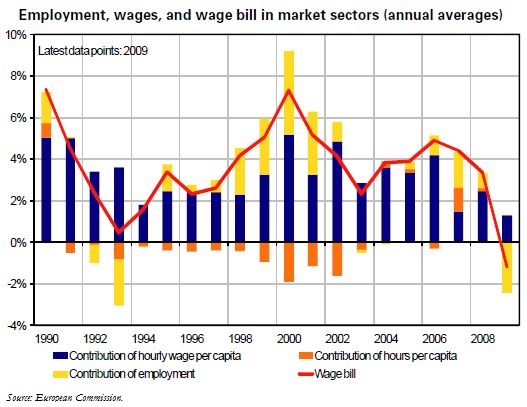Trésor-Economics No. 83 - Impact of the crisis on employment and wages in France
In 2009, France experienced its deepest recession since World War II, with a GDP contraction of 2.6% (versus 0.9% in 1993). This issue of Trésor-Economics describes the labor-market adjustment during the recent crisis, highlighting the characteristics of the persons most affected.
The recession entailed large job losses mainly in the non-farm market sector, where they rose from 183,000 in 2008 to 331,000 in 2009. In 2010, the economy started creating jobs again (74,000) and unemployment eased. The effects of the crisis on employment were alleviated by measures taken to limit job destructions (such as the extension of part-time work) and encourage job creations (such as zero employers' social contributions for very small enterprises and expanded work-linked training). As a result, the adjustment of employment over the entire crisis period seems rather mild relative to the magnitude of the economic shock.
At the start of the recession, the adjustment was concentrated in temporary-agency work, but the sector restarted creating jobs again in Q2 2009. After adjusting for past trends, the sectors that contributed most heavily to job destructions in 2009 were manufacturing and services.
Senior employment proved resilient: the employment rate for the 55-64s, adjusted for age structure, rose steadily, even during the recession period.
At the same time, wage growth slowed as a consequence of the economic downturn and rising unemployment. Gains in the average wage per capita weakened from 2.6% in 2008 to 1.3% in 2009. Growth in the basic monthly wage registered a milder slowdown from 3.0% to 2.2%.
The total wage bill in the mainly non-farm market sectors slipped 1.2% in 2009. The 2.4% fall in paid employment outweighed the 1.3% rise in the hourly wage, while the number of hours worked per capita is estimated to have remained roughly stable. However, paid employment registered a milder contraction than value added, notably thanks to the moderate, lagged adjustment of employment to the economic downturn. As a result, the share of wages in value added rose.
